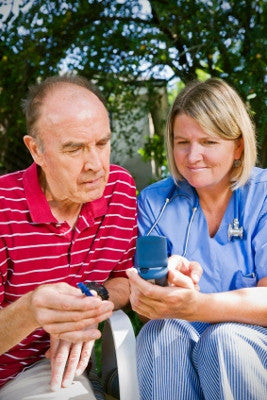The Winter Solstice, on December 21, marked the shortest day in the Northern Hemisphere. People in New York got just over 9 hours 15 minutes of sun, while those in Anchorage Alaska got fewer than 5.5 hours.

Personally, I am already yearning for more light.
Lack of light can contribute to depression. The idea that people are more susceptible to depression in the winter months wasn’t picked up until the 1980’s when South African psychiatrist Norman Rosenthal moved to the US and noticed a change in his mood during the New York winters. Dr. Rosenthal, Dr. Al Lewy, and Dr. Thomas Wehr investigated and identified Seasonal Affective Disorder (SAD). In 1987 it was included in DSM.(1)
Depression rates higher during pandemic
This winter 2020 is an extra dark one. A recent study showed that depression symptom prevalence was more than 3-fold higher during the COVID-19 pandemic than before. During the pandemic, many people are making a lower-income or have no income, have depleted their savings, and have more exposure to stressors, which were all associated with a greater risk of depression. (2)
Studies show that people with diabetes are more susceptible to depression. Depression is three times as prevalent in people with diabetes when assessed by self-report. The combination of diabetes and depression present a major clinical challenge as the outcomes of both conditions are worsened in the presence of the other. Quality of life is worse, diabetes self-management is impaired, the incidence of complications is increased, and life expectancy is reduced. (3)
Symptoms commonly associated with SAD and clinical depression include:
- Feelings of sadness, tearfulness, emptiness, or hopelessness
- Frequent or recurrent thoughts of death, suicidal thoughts, suicide attempts, or suicide
- A tendency to oversleep, early-morning wakefulness or insomnia
- Reduced appetite and weight loss or increased cravings for food and weight gain
- Slowed thinking, speaking, or body movements
- Unexplained physical problems, such as back pain or headaches
- Loss of interest in things once pleasurable
- Fatigue
- Difficulty concentrating, remembering details, and making decisions
- Angry outbursts, irritability or frustration, even over small matters
It is an important time to check in with our clients, colleagues, friends, and family regarding symptoms of depression.
Refer to mental health providers as needed. As I am writing this blog my sister texted me that she is feeling very sad, unmotivated, and just wants to sleep. Diabetes Education Services has resources to help us screen our clients for depression in the Psychological Care Assessment Resource Page.
Tumeric – Golden Spice for Healing
Can food, in particular a golden spice, help those of us without the more serious clinical depression cope this winter with milder winter blues?
Turmeric is a plant with a very long history of medicinal use, dating back 4000 years. In parts of Southeast Asia, turmeric is used not only as a principal spice but also as a component in religious ceremonies.
Turmeric, derived from the root of Curcuma longa, a flowering plant of the ginger family, is a gold-colored spice commonly used in the Indian subcontinent, not only for health care but also for the preservation of food and as a yellow dye for textiles. Curcumin, which gives the yellow color to turmeric, was first isolated almost two centuries ago, and its structure as diferuloylmethane was determined in 1910.
Since the time of Ayurveda (1900 BCE) numerous therapeutic activities have been assigned to turmeric for a wide variety of diseases and conditions. Extensive research within the last half-century has proven that most of these activities, once associated with turmeric, are due to curcumin. Curcumin has been shown to exhibit antioxidant, anti-inflammatory, antiviral, antibacterial, antifungal, and anticancer activities. (4)
“Curcumin can influence several mechanisms in the body; in particular, it is a powerful natural anti-inflammatory and antioxidant. This has relevance to depression because people with depression have greater inflammation and oxidative stress, which can affect all major organs of the body, including the brain”, reports Adrian Lopresti, PhD., a clinical psychologist and researcher at the School of Psychology and Exercise Science at Murdoch University. (5)
Due to curcumin’s anti-inflammatory effect, a 2013 review of studies suggests that curcumin can decrease the level of glucose in the blood, as well as other diabetes-related complications. (6) 500-1000 mg of curcumin per day has been found to promote the anti-inflammatory effect. (7) 1 teaspoon of fresh turmeric has about 200 mg of curcuminoids. Curcumin’s bioavailability can be enhanced by 2000% by combining it with black pepper (piperine is the major active component). (8)
Try turmeric tea or add turmeric to scrambled eggs, to rice as it is cooking, to stews. You can also try my favorite before bed treat, Golden Milk.

Golden Milk Recipe – Yield 2 servings
- 2 cups milk (coconut, almond, soy milk can be substituted)
- 1 Tb honey or stevia syrup to taste
- 1 Tb coconut oil
- 1 tsp ground turmeric
- 1 tsp ground cinnamon
- Pinch of ground black pepper
- Pinch of grated fresh ginger or ¼ tsp ground ginger
Directions
Simply pour all ingredients into a small saucepan, whisk to combine ingredients. Heat until hot to the touch but not boiling – about 4 minutes. Enjoy warm.
Written by Dawn DeSoto RD, CDCES, our resident Nutrition Content Writer
References
- Melrose, S. (2015) Seasonal affective disorder: an overview of assessment and treatment approaches. Depression research and treatment. 2015
- Ettman, CK, Abdalla, SM, Cohen, GH. Prevalence of Depression Symptoms in US Adults Before and During the COVID-19 Pandemic. JAMA NETW Open. 2020;3(9)
- Holt RI, de Groot M, Golden SH. Diabetes and depression. Curr Diab Rep. 2014;14(6):491
- Hewlings, S, Kalman DS. Curcumin: A Review of Its’ Effects on Human Health. Foods. 2017 Oct; 6(10): 92
- Lopresti AL, Maes M, Maker GL, et al. Curcumin for the treatment of major depression: A randomized, double blind, placebo-controlled study. J Affect Dis. 2014;167:368-375
- Zhang DW, Fu M, Gao SH, Liu JL. Curcumin and Diabetes: A Systemic Review Evid Based Complement Alternat Med. 2013,2013:636053
- Gupta SV, Patchva S, Aggarwal BB. Therapeutic Roles of Curcumin: Lessons Learned from Clinical Trials: AAPS J. 2013 15(1):195-218
- Prasad S, Tyagi AK, Bharat B. Recent Developments in Delivery, Bioavailability, Absorption and Metabolism of Curcumin: the Golden Pigment from Golden Spice. Cancer Res Treat. 2014 Jan:46(1)2-18
Level 2 | Assessing Coping Skills Standards | 1.5 CEs

We are updating this course to reflect the 2021 ADA Standards of Care. This presentation will include the latest information on Social Determinants of health, assessment strategies and approaches. We will explore the psychosocial issues that can discourage individuals from adopting healthier behaviors and provides strategies to identify and overcome these barriers.
Life studies are used to apply theory to real life situations. A great course for anyone in the field of diabetes education or for those looking for a new perspective on assessment and coping strategies.
Topics include:
- Name assessment areas of healthy coping
- List psycho-social and emotional barriers
- Provide strategies for healthcare professionals to identify and overcome barriers
- Discuss strategies to develop an individualized diabetes education plan
This course is included in: Level 2 – Standards of Care Intensive. Purchase this course individually for $29 or the entire bundle and save 70%.
Enroll in our entire Level 2 – Standards of Care Intensive to join us for the below for Live Webinar Updates. All courses air at 11:30 a.m. (PST)
- December 23, 2020 – Older Adults & Diabetes – 1.5 CEs
- December 29, 2020 – Assessing Coping Skills Standards – 1.5 CEs
- December 30, 2020 – Hyperglycemic Crisis Standards – 1.0 CEs
- February 2, 2021 – 2021 Standards of Care Update – 2.0 CEs
Sign up for Diabetes Blog Bytes – we post one daily Blog Byte from Monday to Friday. And of course, Tuesday is our Question of the Week. It’s Informative and FREE! Sign up below!
[yikes-mailchimp form=”1″]Accreditation: Diabetes Education Services is an approved provider by the California Board of Registered Nursing, Provider 12640, and Commission on Dietetic Registration (CDR), Provider DI002. Since these programs are approved by the CDR it satisfies the CE requirements for the CDCES regardless of your profession.*
The use of DES products does not guarantee the successful passage of the CDCES exam. CBDCE does not endorse any preparatory or review materials for the CDCES exam, except for those published by CBDCE.









